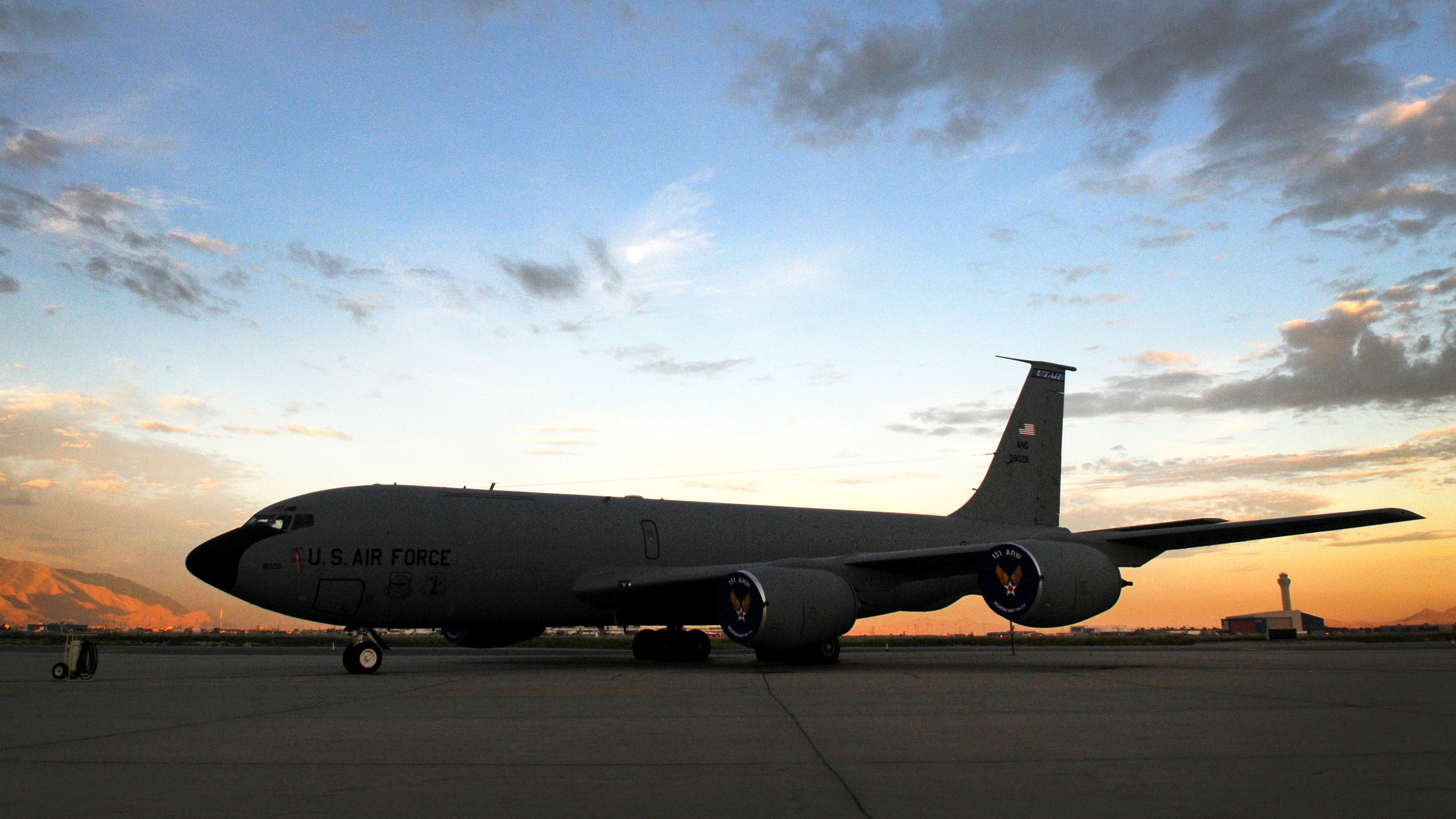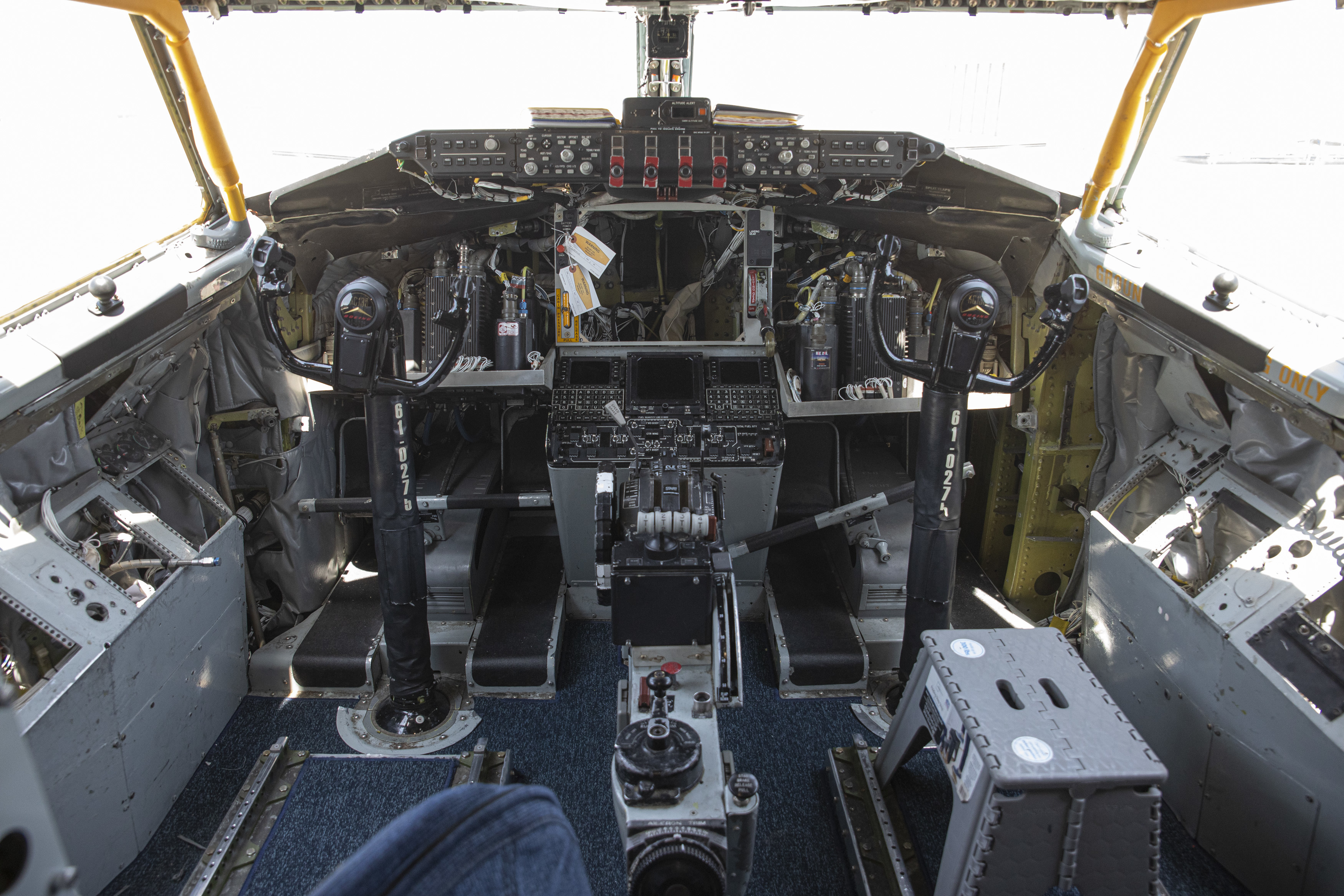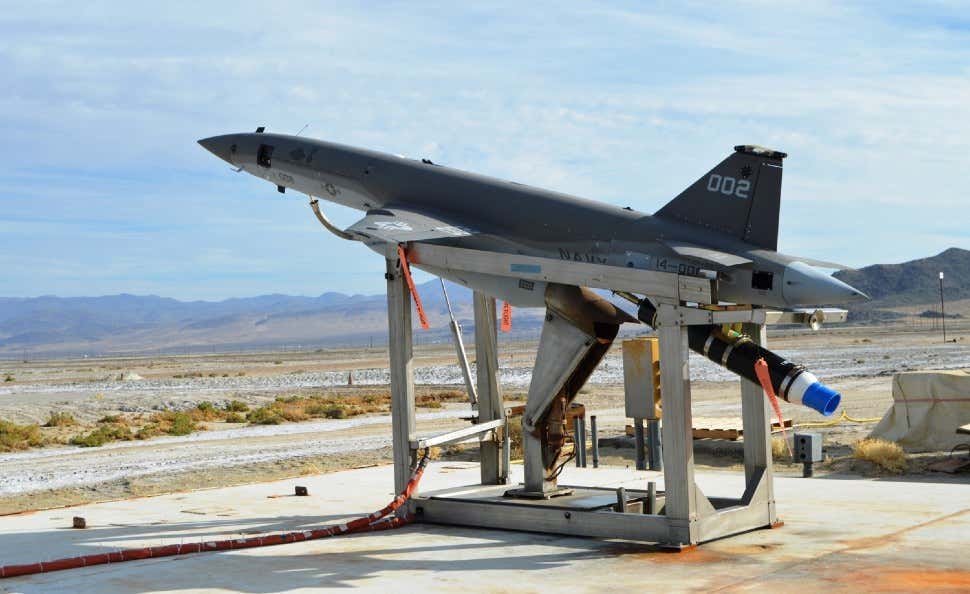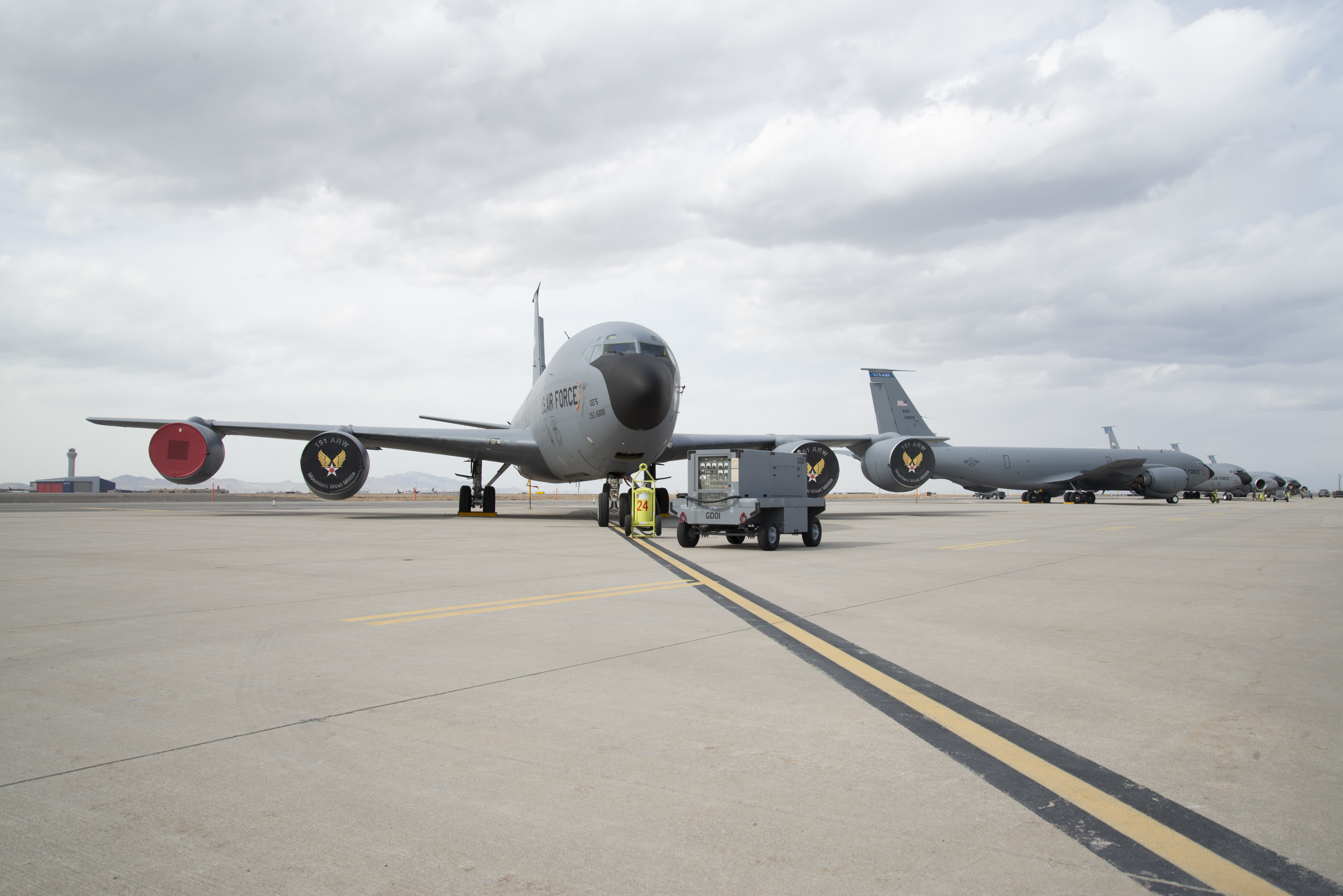New systems installed in the U.S. Air Force’s KC-135 Stratotanker will allow the veteran aerial refueling tanker to serve as a communications node for other platforms, including armed drones, with plans to add underwing pods that will further expand this capability and boost its own defenses. In recent trials, the aircraft received data from the Kratos Unmanned Tactical Aerial Platform-22, or UTAP-22, a low-cost loyal wingman drone that you can read more about here.
The new capabilities are being added to the Cold War-era KC-135 under the Real-Time Information in the Cockpit (RTIC) initiative, with a first updated aircraft now flying with the Utah Air National Guard’s 151st Air Refueling Wing. The aircraft was upgraded last July, but details of the effort have only recently been officially released.

The Utah Air National Guard began work on increasing the Stratotanker’s potential for developing and disseminating situational awareness data back in 2018 and last December this work culminated in an interim KC-135 Test Detachment being set up within the Utah ANG, formalizing its role in the program.
The RTIC package outfits the tanker with communication capabilities that are compatible with the NATO-standard Link 16 system, with further plans to add the Situational Awareness Datalink (SADL), and Secure Beyond Line-of-Sight (satellite) communications, too. Link 16 and SADL are both tactical datalinks that allow platforms to share near-real-time information including digital voice communications, imagery, and text messages, as well as location and sensor data. RTIC is also a follow-on to the previous Roll-On Beyond Line-of-Sight Enhancement (ROBE) kit that was added to 20 KC-135s to permit data-fusion between Link 16 and SADL-equipped platforms and near-real-time communications between allied forces in combat and headquarters across the globe.
Meanwhile, RTIC should give the Stratotanker crews a much greater level of situational awareness, pushing much more accurate information to airmen almost instantaneously, with potentially significant results on overall combat capability. Ground and flight testing for the RTIC program was scheduled to begin at Roland R. Wright Air National Guard Base, home of the 151st Air Refueling Wing, in March and be completed in May.
“For years, I have relied on AWACS or receiver aircraft, a grease pencil and a laminated chart to build a real-time combat picture,” explained Lieutenant Colonel Jeff Gould, who led the Air National Guard Air Force Reserve Test Center (AATC) team that worked to integrate RTIC on the KC-135.

“KC-135 crews will now have the ability to make better-informed decisions and communicate more effectively with their receiver aircraft, who have been equipped with a tactical datalink since the early 1990s, changing the way we [KC-135s] operate and provide combat effect,” Lieutenant Colonel Gould added.
While exchanging data with the fighter jets and other platforms that KC-135s regularly top up during missions, the RTIC is expected to have wider significance as it paves the way for the much-heralded Advanced Battle Management System (ABMS), a digital battle network system designed to collect, process, and share data among U.S. and allied forces in real-time.

“The RTIC program provides the pathway and baseline for the KC-135 to support the Advanced Battle Management System,” said Brigadier General Daniel Boyack, commander of the Utah Air National Guard.
The Utah guardsmen have also been working on bringing a loyal wingman-type drone into the KC-135’s data-sharing environment, with an Air Force Research Lab experiment using the Kratos UTAP-22 over the U.S. Navy test range at China Lake, California. Those trials were run as part of the SkyDog Unmanned Aerial Vehicle program, about which there are currently very few details. Back in 2015, a U.S. Marine Corps AV-8B Harrier II jet used a datalink to share information with a UTAP-22 acting as a loyal wingman. The Harrier controlled multiple units in a combat-like scenario via a basic point-and-click type interface.
It is noteworthy, too, that the UTAP-22 has already been evaluated by the Air Force Reserve Test Center in a different capacity, air-launched from F-15C fighter jets as part of loyal wingman experiments that you can read more about here.

Using “specialized equipment added to the RTIC infrastructure,” the KC-135 received off-board data from the UTAP-22, including information that wouldn’t necessarily be provided through Link 16. “Full-motion video, along with a host of sensor information was pushed to our crew,” said Lieutenant Colonel Gould. It suggests the KC-135 will go on to play an important role in manned and unmanned teaming, as the loyal wingman concept moves closer to a fully operational reality. It could also point to further movement on plans to defend tankers and other more vulnerable support aircraft using loyal wingman drones, a growing developmental trend that The War Zone has talked about in the past.
Manufacturer Kratos describes its UTAP-22 as an “unmanned aircraft capable of collaborative operations with manned assets in contested environments,” better known by the term loyal wingman. Expected to operate at least semi-autonomously, operational loyal wingman drones would receive mission instructions from another, piloted aircraft, although the UTAP-22, in particular, has also been demonstrated as part of a networked team of multiple drones.

Beyond sensors, of course, the UTAP-22s can carry up to 350 pounds of other stores internally, and 500 pounds more on underwing pylons and wingtip pods. These could include munitions, electronic warfare jammers, or perhaps even other, smaller drones. With a reported price of between $2 and $3 million, the UTAP-22 is also designed to be attritable, meaning combat commanders would be willing to risk losing them in more hazardous operational scenarios.
The UTAP-22 also served as a stepping stone on the developmental path toward the altogether more ambitious XQ-58A Valkyrie, a purpose-built low-cost, loyal wingman-type drone, with stealthy features. The kinds of drone connectivity that have begun to be tested aboard the KC-135 could equally apply to drones like this, as well.
The RTIC plans ultimately envisage the KC-135 serving as a “data repository,” that can bring together information from all types of platforms, in the air, land, sea, space, and cyber domains. Using AI, that data can then be fused together and presented as a cohesive picture. That could help fill in the mission currently provided by a small fleet of Battlefield Airborne Communications Node (BACN) aircraft that are currently in great demand.

Meanwhile, the “data repository” ambition should align the veteran tanker closely with ABMS and the related Joint All-Domain Command and Control (JADC2) effort.
“The KC-135 is expected to play a critical role as a node within ABMS and JADC2, this is the first step in supporting the future of warfare,” observed Colonel Jeremiah Tucker, commander of the AATC, the Air National Guard’s development and testing arm for unique capabilities. “Gathering, correlating and fusing off-board aircraft data is critical to creating former Assistant Secretary of the Air Force for Acquisitions Dr. Roper’s ‘military internet of things.’”
The AATC now plans on providing two Air Reserve Component KC-135s with underwing pods that can accommodate “a host of ABMS and defensive technologies” using an open-architecture concept. Work on this has also been underway for around three years, again in collaboration with the Utah National Guard.
It’s not clear what those “defensive technologies” might be, but it could stem from the realization that, as a critical force-multiplier, even when flying “only” as a tanker, an enemy would likely seek to destroy a KC-135 at the first opportunity during a conflict. Therefore, it would make sense of the work to enhance the aircraft’s self-defense measures.
The underwing stores for the KC-135, which have dubbed Gladiator Pods, would be based on the existing Multipoint Refueling System (MPRS) pod, currently fitted to allow KC-135s to refuel U.S. Navy and Marine Corps aircraft, as well as probe-equipped NATO and allied assets. MPRS pods are fitted to 20 U.S. Air Force KC-135s.
Gladiator Pods are expected to appear on “a few” KC-135s by Fiscal Year 2023 for flight testing.
“Utilizing the outer mold line of the MPRS pod, we can rapidly integrate modular and adaptive communication, defensive, and sensor technologies on the KC-135,” Lieutenant Colonel Gould said.
Again, exactly how those defensive capabilities for the big tanker may manifest themselves is not yet clear, but what is ever more apparent is the fact the Air Force, as well as the Navy, has real concerns about the ability of non-stealthy support aircraft to operate anywhere near the front lines during a future major conflict. Beyond making something like a stealth tanker, there have been other defensive upgrades for these kinds of aircraft talked about in the past five years, as well.
Video of the MPRS pod in action on a U.S. Air Force KC-135:

The Gladiator Pod might also relate to previously announced plans to install a new pod on the KC-46A Pegasus tanker, allowing that platform to serve as a communications node as part of the ABMS initiative. Perhaps, delays to the KC-46 program have now seen the pod-based communications gateway shifted to the KC-135, although previous upgrades mean this aircraft already offers enhanced awareness and networking capabilities.
The same U.S. Department of Defense release confirmed the AATC “plans on equipping the pod with the necessary sensors capable of detecting, identifying, tracking, and defending as a data node within ABMS.” This points to the fully integrated, RTIC-enabled, Gladiator Pod-equipped KC-135 not only serving as a tanker and as a data node and ABMS host but also offering some level of defensive self-protection.

AATC commander Colonel Tucker confirmed that he expects the KC-135 to serve in the front line beyond 2040, but the aircraft is already having to take on more taskings from its planned replacement, the KC-46, 146 examples of which are on order. What is more, the number of KC-46s on order means the Air Force still requires around 300 KC-135s to meet its basic tanker requirements, at least until more tankers become available under a new procurement drive.
Earlier this year, General Jacqueline Van Ovost, the head of Air Mobility Command, said that work on the KC-46’s troubled Remote Vision System (RVS) — which the boom operators use when linking up with receiving aircraft — isn’t expected to be complete until “late 2023.” Bearing in mind the time it will take to integrate it and train personnel to use it, it makes sense that the leadership is preparing for the KC-135 to maintain the burden of combat operations until 2026.

The Stratotanker has already served the Air Force for more than six decades and a relentless stream of upgrades means its value is undiminished, even as the KC-46 waits in the wings. With an emerging role as a data node and ABMS host, however, the KC-135 could end up in even greater demand than it is now.
The ability of an aircraft to increase situational awareness is among the most potent weapons on the modern battlefield, and the importance of this mission set is only set to increase. The KC-135 could well emerge as a powerful rear-tier networking node. As Colonel Tucker pointed out, “In a future conflict, the rate and volume of 1s and 0s the KC-135 passes will be just as valuable as the fuel it provides today.”
This article was updated on April 13 to reflect changes made to the original Department of Defense news release. An official quoted in the original release had suggested the KC-46 was not due to become fully operational until 2026, a quote that has now been removed from the original. In addition, a passage from the release noting that the Stratotanker “is expected to provide the preponderance of air refueling beyond 2040” was removed as well.
Contact the author: thomas@thedrive.com
